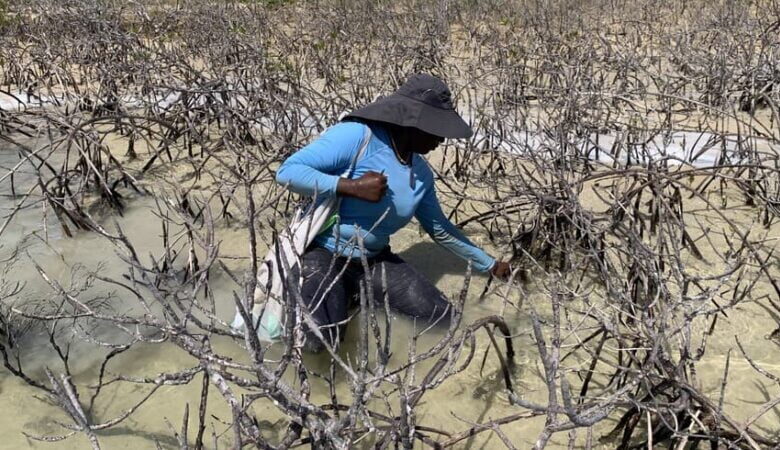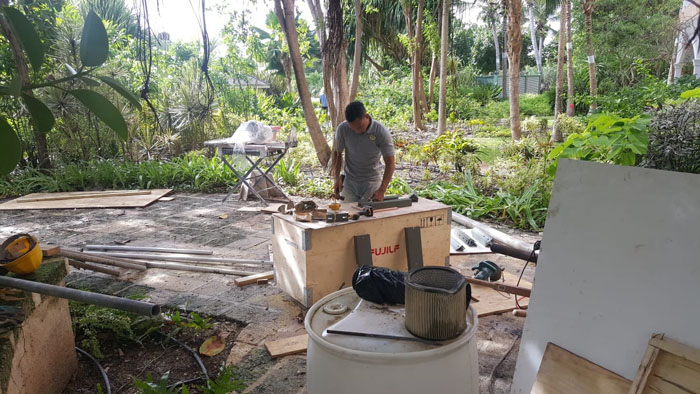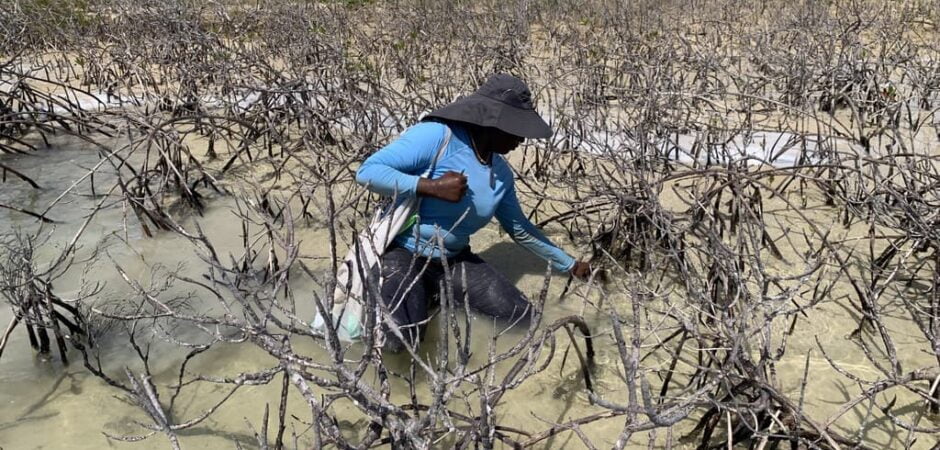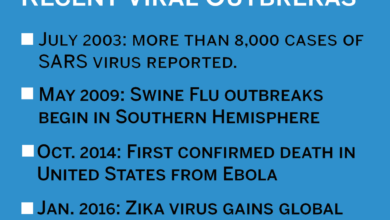
Caribbean Resorts Sanitation Programs for a Brighter Future
Caribbean resorts work on sanitation programs to improve the well-being of both tourists and local communities. These initiatives address crucial issues like water quality, waste management, and community involvement, ultimately contributing to a healthier and more sustainable environment for everyone.
Current sanitation practices in Caribbean resorts vary significantly. Some resorts boast advanced systems, while others face challenges in implementing comprehensive programs. This article explores the diverse approaches to improving sanitation, examining successes, obstacles, and future recommendations for Caribbean resorts.
Introduction to Caribbean Resort Sanitation

Caribbean resorts, a vital part of the region’s economy, face the challenge of balancing tourism growth with responsible environmental practices. Maintaining adequate sanitation is crucial for both preserving the natural beauty of the islands and ensuring a positive visitor experience. This includes not only the comfort and safety of guests but also the health and well-being of local communities and the environment itself.Proper sanitation systems are essential to prevent the spread of disease and protect the delicate ecosystems of the Caribbean.
The intricate interplay between human activities, water resources, and waste management directly affects the region’s long-term sustainability and the appeal of these resorts as tourist destinations.
Current State of Sanitation in Caribbean Resorts
The current state of sanitation in Caribbean resorts varies considerably, influenced by factors such as resort size, location, and available resources. Some resorts have robust sanitation infrastructure, demonstrating a commitment to environmental protection and guest well-being. However, others may struggle with inadequate systems or outdated technologies, potentially exposing visitors and local communities to health risks and environmental damage.
Types of Sanitation Systems Used in Caribbean Resorts
Several sanitation systems are employed in Caribbean resorts, reflecting the diverse needs and resources of the region. These include:
- Septic Systems: These systems are common, particularly in smaller resorts and secluded locations. They rely on the natural decomposition of waste, but require proper maintenance and appropriate soil conditions to prevent environmental contamination.
- Wastewater Treatment Plants: Larger resorts, especially those with high guest volumes, often employ wastewater treatment plants. These plants utilize various processes to remove pollutants and pathogens from wastewater before it is discharged back into the environment. The efficiency of these plants greatly impacts the environmental footprint of the resort.
- Greywater Recycling Systems: These systems collect and treat greywater (from showers, sinks, and laundry) to reuse it for irrigation or other non-potable purposes. This practice helps conserve freshwater resources and reduces the strain on local water supplies.
- Composting Toilets: These innovative systems convert human waste into nutrient-rich compost, which can be used to fertilize gardens or agricultural lands. This approach is environmentally friendly and helps reduce reliance on synthetic fertilizers.
Importance of Sanitation Programs for the Tourism Industry in the Caribbean
Sanitation programs are vital to the success of the Caribbean tourism industry. Clean and healthy environments attract visitors, encouraging repeat business and positive word-of-mouth recommendations. The perception of cleanliness and hygiene is a significant factor in attracting tourists, directly impacting a resort’s profitability and reputation. High standards of sanitation also protect the region’s natural resources and contribute to the long-term sustainability of the tourism sector.
Potential Impact of Poor Sanitation on the Environment and Local Communities
Poor sanitation practices can have devastating consequences on the environment and local communities. Contaminated water sources can lead to the spread of waterborne diseases, affecting both tourists and residents. Improper waste disposal can pollute coastal waters, harming marine life and impacting the region’s valuable fisheries. Moreover, inadequate sanitation infrastructure can strain local resources, including water supplies and waste management systems, which can have long-term implications for the well-being of local communities.
These negative impacts can severely damage the reputation of the resort and the region as a whole, negatively impacting the tourism sector.
Methods and Programs for Improved Sanitation
Caribbean resorts, crucial economic drivers, face the challenge of maintaining high sanitation standards while minimizing environmental impact. This necessitates innovative approaches that balance guest comfort with sustainable practices. Effective sanitation programs are not just about hygiene; they are integral to the reputation, profitability, and environmental responsibility of these establishments.Effective sanitation programs are essential for a positive guest experience, safeguarding public health, and promoting environmental sustainability.
Caribbean resorts are stepping up their sanitation programs, focusing on crucial improvements for guest health and safety. This is a vital effort, especially considering recent staffing changes within the industry, like the news that after 8 years veitch departs ncl. after 8 years veitch departs ncl This departure highlights the ever-evolving nature of the tourism sector.
Ultimately, these sanitation improvements are key to the continued success of Caribbean resorts and the visitor experience.
A holistic approach, integrating diverse strategies and community involvement, is key to achieving lasting improvements. This includes a commitment to ongoing monitoring, evaluation, and adaptation of these programs.
Different Approaches to Improving Sanitation
Various strategies are employed to improve sanitation in Caribbean resorts. These range from infrastructure upgrades to community engagement initiatives. Some resorts focus on upgrading existing facilities, while others implement comprehensive water management systems to reduce water usage and pollution. Innovative technologies and best practices play a vital role in the success of these initiatives.
Caribbean resorts are increasingly prioritizing sanitation programs, a crucial step in responsible tourism. This focus on hygiene goes beyond the surface, addressing not just guest comfort, but also community well-being. It’s essential to break out of the travel echo chamber, and look beyond the idyllic Instagram posts, to truly understand the impact of tourism. By supporting resorts with robust sanitation initiatives, we can ensure sustainable tourism practices, leading to healthier environments and local communities.
Exploring the intricacies of responsible travel through initiatives like breaking out travel echo chamber is key to truly appreciating the interconnectedness of travel and local communities. This deeper understanding, coupled with improved sanitation, fosters genuine and positive travel experiences.
Comparison of Sanitation Programs in Different Caribbean Regions
Sanitation programs vary across the Caribbean, reflecting regional differences in infrastructure, resources, and community needs. For instance, some islands may prioritize the implementation of wastewater treatment plants, while others focus on improving waste disposal systems. Differences in cultural practices and available funding also influence the design and execution of these programs. A comparative analysis reveals unique challenges and successes in each region.
Caribbean resorts are increasingly focusing on sanitation programs, which is great to see. This commitment to hygiene reflects a broader trend in the travel industry, similar to how companies like American Queen Voyages are forging new partnerships, such as their recent collaboration with Rocky Mountaineer, to enhance the guest experience. This innovative approach to travel, highlighted in their american queen voyages rocky mountaineer partnership , hopefully inspires other tourism destinations to improve their sanitation protocols and ensure a safe and enjoyable experience for all visitors to the Caribbean.
Best Practices for Sanitation Management in Resort Settings
Implementing best practices is crucial for the long-term success of sanitation programs. These practices include regular inspections, comprehensive training programs for staff, and the use of readily available technologies to monitor and control waste streams. This approach ensures consistency and efficiency in the management of sanitation facilities and procedures.
Caribbean resorts are stepping up their game with new sanitation programs, focusing on eco-friendly practices. It’s great to see this initiative, especially considering the recent news that the academy kicks off 58th artists of hawaii exhibit is inspiring. Hopefully, this renewed focus on hygiene and sustainability will set a new standard for the industry and keep tourists coming back for more while protecting the delicate Caribbean environment.
Role of Local Communities in Sanitation Programs
Involving local communities in sanitation programs is vital for sustainability and long-term effectiveness. This engagement includes community education initiatives on hygiene practices, waste management, and the importance of sanitation. Collaborations with local organizations and residents empower communities to actively participate in maintaining clean and healthy environments. Community involvement ensures the program is tailored to the local context and fosters ownership.
Examples of Successful Sanitation Programs in Caribbean Resorts
Several Caribbean resorts have successfully implemented sanitation programs. For example, some resorts have implemented composting programs for organic waste, reducing landfill burden and creating valuable fertilizer. Others have invested in greywater recycling systems, conserving water and minimizing wastewater discharge. These examples demonstrate the positive impact of proactive sanitation management.
Potential Obstacles to Sanitation Program Implementation
Implementing comprehensive sanitation programs in Caribbean resorts can encounter several obstacles. These include budgetary constraints, limited technical expertise, and resistance to change among staff and residents. Furthermore, inadequate infrastructure, lack of awareness, and community engagement challenges can impede progress. Addressing these challenges requires a multifaceted approach, encompassing financial support, capacity building, and community engagement.
Sanitation Infrastructure Improvements
Effective sanitation programs necessitate investments in robust infrastructure. This includes upgrades to wastewater treatment plants, construction of septic systems, and improvements to water distribution networks. Properly designed infrastructure ensures the safe and efficient removal of wastewater and solid waste, preventing environmental contamination and protecting public health.
Impact of Sanitation Programs on the Environment: Caribbean Resorts Work On Sanitation Programs
Caribbean resorts face unique environmental challenges, and effective sanitation programs are crucial for mitigating these issues. Poor sanitation practices can contaminate water sources, pollute coastal areas, and harm delicate ecosystems. Well-designed programs, however, can significantly improve environmental quality, fostering a healthier and more sustainable tourism sector.Implementing robust sanitation programs is vital for the long-term health of the Caribbean environment.
Proper waste management, coupled with responsible water usage, can drastically reduce pollution and protect fragile ecosystems. This approach not only safeguards the natural beauty of the region but also contributes to the overall well-being of its inhabitants.
Environmental Benefits of Implementing Sanitation Programs
Effective sanitation programs bring a multitude of environmental benefits. They prevent the spread of waterborne diseases, which protects both human and animal health. Reduced pollution from untreated wastewater safeguards water resources and aquatic life. Moreover, these programs can foster a healthier tourism sector by demonstrating a commitment to environmental responsibility, attracting environmentally conscious travelers.
Connection Between Sanitation and Water Quality in the Caribbean
The Caribbean’s unique geography, with its abundance of coral reefs and coastal areas, makes water quality paramount. Poor sanitation practices directly contaminate local water sources. Sewage discharge, improperly disposed of waste, and inadequate wastewater treatment lead to eutrophication, harming coral reefs and marine life. Properly managed sanitation programs ensure clean water, preserving the region’s biodiversity and its tourism assets.
Examples of Reducing Pollution in Coastal Areas
Several Caribbean islands have implemented programs that successfully reduce pollution in coastal areas. For example, improved sewage treatment plants in Barbados have demonstrably decreased the amount of pollutants entering the surrounding waters. Similarly, the construction of modern septic systems on the island of St. Lucia has helped minimize groundwater contamination. These programs showcase the positive impact of well-planned sanitation infrastructure on preserving the environment.
Framework for Evaluating Environmental Impact of Sanitation Programs, Caribbean resorts work on sanitation programs
A comprehensive framework for evaluating the environmental impact of sanitation programs should include:
- Baseline data collection: Assessing existing environmental conditions before program implementation is essential. This includes measuring water quality, identifying pollution sources, and evaluating the health of local ecosystems.
- Monitoring indicators: Establishing key performance indicators (KPIs) such as water quality metrics, reduced pollutant discharge, and the health of marine life. These indicators provide a quantifiable measure of the program’s effectiveness.
- Long-term evaluation: Monitoring the long-term effects of the program on the environment is crucial. This allows for adjustments to the program based on evolving conditions and changing needs. This includes tracking changes in water quality, biodiversity, and the overall health of the ecosystem.
Waste Management in Sanitation Programs
Waste management plays a critical role in effective sanitation programs. Proper collection, transportation, and disposal of solid waste prevent the spread of disease and protect the environment. Implementing programs that promote waste reduction, reuse, and recycling can significantly minimize the environmental footprint.
- Source reduction: Encouraging responsible waste production through awareness campaigns and the promotion of reusable items.
- Recycling programs: Implementing effective recycling programs to divert recyclable materials from landfills, thus minimizing waste disposal and maximizing resource utilization.
- Waste-to-energy solutions: Exploring and implementing technologies that convert waste into energy, such as anaerobic digestion. This approach reduces landfill burden and generates sustainable energy.
Impact of Sanitation Programs on Tourism
Cleanliness and hygiene are paramount to a positive tourist experience. Caribbean resorts, renowned for their pristine beaches and vibrant culture, can significantly enhance their appeal by prioritizing sanitation programs. A well-managed sanitation infrastructure can translate into higher guest satisfaction and a more sustainable tourism sector.Improved sanitation directly impacts the overall experience of visitors. This, in turn, influences their willingness to return and recommend the destination to others.
A focus on comprehensive sanitation protocols goes beyond just maintaining cleanliness; it reflects a commitment to the well-being and safety of all guests.
Relationship Between Sanitation and Tourism Satisfaction
Tourist satisfaction is strongly correlated with the perceived cleanliness and hygiene of a destination. Guests who experience well-maintained facilities and a clear commitment to sanitation protocols report higher levels of satisfaction. This satisfaction extends to all aspects of the trip, from the cleanliness of accommodations to the overall environment. This positive experience translates into higher ratings and recommendations.
Attracting More Tourists Through Improved Sanitation
Robust sanitation programs can serve as a powerful marketing tool, attracting a larger and more diverse range of tourists. Potential visitors are more likely to choose destinations known for their cleanliness and hygiene. This increased appeal can lead to a significant boost in tourism revenue and employment opportunities. For example, resorts with a strong reputation for sanitation often attract families, who prioritize safety and health when choosing vacation destinations.
Economic Benefits of Sanitation Programs
Sanitation programs can yield substantial economic benefits for Caribbean resorts. Improved sanitation leads to reduced instances of illness, resulting in lower healthcare costs for both tourists and local communities. This directly translates to increased spending by tourists, as healthier visitors are more likely to engage in activities and spend money on dining and entertainment. Reduced instances of illness and disease also lead to decreased absenteeism among staff, reducing operational costs.
Comparing Tourist Experiences in Resorts with and without Robust Sanitation Programs
Resorts with robust sanitation programs often report higher guest satisfaction ratings and greater repeat business. This is contrasted by resorts lacking robust sanitation programs, which often face complaints and negative reviews. Guests in well-maintained resorts are more likely to engage in various activities and spend more time at the resort, contributing to higher revenue. The difference in experience is significant, impacting not only satisfaction but also the resort’s overall reputation and long-term viability.
Caribbean resorts are stepping up their sanitation programs, crucial for maintaining pristine beaches and waters. This focus on cleanliness is essential for a positive tourist experience. Recently, though, the news of Ambassadors selling their marine division, ambassadors sells marine division , has raised some interesting questions about the future of Caribbean tourism. However, it’s important to remember that the commitment to improving sanitation by Caribbean resorts remains strong and vital for the long-term success of the industry.
Long-Term Benefits for the Tourism Industry
Investing in sanitation programs offers long-term benefits for the tourism industry. A commitment to cleanliness and hygiene fosters a positive image, attracting tourists and building a reputation for quality and safety. This attracts a more diverse range of tourists, including those who prioritize health and environmental sustainability. These programs create a virtuous cycle, enhancing the resort’s reputation, attracting more visitors, and bolstering the local economy.
Community Involvement and Sustainability
Community involvement is crucial for the long-term success of any sanitation program. Active participation from local residents ensures that the program is tailored to their specific needs and that it is effectively integrated into their daily lives. This engagement fosters ownership and a sense of responsibility, leading to higher program compliance and sustainability.Effective sanitation programs are not simply about building infrastructure; they are about empowering communities to manage their own sanitation systems.
This requires a deep understanding of local customs, beliefs, and practices. By incorporating these factors into the design and implementation, programs can be more relevant and impactful, increasing their chances of long-term success.
Importance of Community Education
Educating local communities about proper sanitation practices is essential. This involves more than just providing information; it’s about creating a supportive environment where new behaviors can be adopted. Interactive workshops, demonstrations, and community theater can be highly effective in conveying complex concepts in an engaging and memorable way. Visual aids, such as posters and pamphlets, can reinforce messages and provide accessible information.
Local language materials are critical for ensuring comprehension and broad participation.
Community-Based Sanitation Initiatives
Several successful community-based sanitation initiatives demonstrate the power of local involvement. One example is a program in a coastal village that integrated traditional knowledge with modern sanitation techniques. This approach combined the villagers’ existing understanding of hygiene with the provision of improved latrine facilities and handwashing stations, resulting in significant improvements in health and environmental outcomes. Another successful program focused on promoting the use of composting toilets, educating the community about the environmental benefits, and providing support for the construction and maintenance of these systems.
Strategies for Program Sustainability
Ensuring the long-term viability of sanitation programs requires a multifaceted approach.
- Capacity Building: Training local personnel in maintenance, operation, and monitoring of sanitation facilities is vital. This ensures that the program can continue even after external support is reduced. Communities need to be empowered to maintain their own systems over the long term.
- Financial Sustainability: Explore options for community-based financing models, such as user fees or community-managed funds. These can help ensure that the program can continue to operate without relying solely on external funding. Community participation in funding the maintenance and operations is a key factor in long-term success.
- Monitoring and Evaluation: Regular monitoring of program effectiveness and impact is crucial for identifying areas needing improvement and ensuring that the program remains relevant to the community’s evolving needs. Regular feedback mechanisms allow for adjustments to be made based on real-time data and community insights.
- Community Governance: Establishing community committees or councils responsible for overseeing sanitation facilities can foster accountability and ownership. This creates a system where the community takes responsibility for the maintenance and improvement of sanitation services.
Role of Local Government
Local governments play a critical role in supporting sanitation programs. They can provide funding, technical assistance, and regulatory frameworks that facilitate program implementation. They can also help build partnerships between the community, NGOs, and the private sector. Their role includes creating policies that promote sustainable sanitation practices and ensure compliance with relevant regulations.By actively engaging local communities, governments can build trust and support for sanitation programs, ultimately contributing to improved public health and environmental outcomes.
Highlighting Key Statistics and Data
The Caribbean’s stunning beaches and vibrant culture attract millions of tourists annually. However, inadequate sanitation infrastructure poses a significant threat to public health and the region’s economic prosperity. Understanding the extent of these challenges is crucial for developing effective and sustainable sanitation programs.
Sanitation Issues in the Caribbean
The Caribbean faces a complex sanitation crisis. Many islands struggle with aging infrastructure, limited resources, and a lack of consistent enforcement of sanitation regulations. This often results in inadequate sewage treatment, overflowing septic tanks, and improper waste disposal, leading to environmental pollution and health risks. Open defecation, while less prevalent in tourist areas, remains a concern in some communities.
Prevalence of Waterborne Diseases
Waterborne diseases, such as cholera, typhoid, and diarrhea, are prevalent in areas with poor sanitation. These diseases disproportionately affect vulnerable populations and can significantly impact tourism revenue. For example, outbreaks of waterborne illnesses can deter tourists, leading to lost business for hotels and restaurants. Studies have shown a direct correlation between improved sanitation and a decrease in the incidence of waterborne diseases.
Economic Impact of Poor Sanitation
The economic consequences of poor sanitation are substantial. Lost tourism revenue due to illness outbreaks, healthcare costs associated with treating waterborne diseases, and the costs of repairing damaged infrastructure represent significant financial burdens. The loss of tourism revenue is especially significant in countries heavily reliant on the sector. For example, an outbreak of cholera in a popular tourist destination could lead to a significant decline in visitor numbers and related economic activities.
Costs of Implementing Sanitation Programs
Implementing effective sanitation programs requires significant upfront investment. Costs vary depending on the specific needs of each island, including the scale of existing infrastructure problems, the level of community involvement, and the desired level of sustainability. The initial capital expenditure can be substantial, but the long-term benefits of improved sanitation, such as reduced healthcare costs and increased tourism, can far outweigh these costs.
Summary of Sanitation Program Costs in Caribbean Countries
| Country | Estimated Cost (USD) | Description |
|---|---|---|
| Barbados | $10 million | Includes upgrading wastewater treatment facilities and expanding access to improved sanitation in underserved communities. |
| Dominican Republic | $25 million | Focuses on improving sewage collection and treatment systems in major resort areas. |
| Jamaica | $15 million | Includes construction of new sewage treatment plants and upgrading existing infrastructure. |
| Trinidad and Tobago | $20 million | Concentrates on upgrading water supply and sanitation systems in urban areas and promoting community-based programs. |
Note: These figures are estimates and can vary depending on specific project scope and implementation details. Ongoing operational costs must also be considered for long-term sustainability.
Addressing Potential Obstacles
Implementing robust sanitation programs in Caribbean resorts presents unique challenges. From navigating complex logistical hurdles to securing necessary funding, overcoming obstacles requires careful planning and a collaborative approach. These challenges are not insurmountable, and proactive strategies can lead to successful and sustainable programs.Addressing the practicalities of sanitation infrastructure and operational costs, coupled with ensuring community buy-in and governmental support, are key to long-term success.
This section explores the common hurdles, the solutions, and examples of successful strategies.
Common Challenges in Implementing Sanitation Programs
Caribbean resorts often face a multitude of challenges in implementing effective sanitation programs. These can include limited access to reliable water sources, inadequate sewage and wastewater treatment facilities, and a lack of skilled personnel to manage and maintain the systems. Furthermore, the specific geographical and cultural contexts of each island can introduce unique constraints.
Overcoming Logistical and Financial Barriers
Logistical hurdles, such as transporting supplies and personnel, and financial constraints, including securing funding for infrastructure improvements and program maintenance, are common. Implementing innovative solutions, such as partnering with local businesses for supply delivery or seeking grants from international organizations, can help overcome these challenges.
The Importance of Governmental Support
Governmental support plays a critical role in the success of sanitation programs. Laws and regulations that incentivize resort compliance with sanitation standards, as well as funding for infrastructure development and capacity building, are crucial. Effective collaboration between government agencies, resort operators, and community members is essential for successful program implementation. Without supportive government policies, programs are likely to face obstacles in long-term sustainability and widespread adoption.
Possible Solutions to Sanitation Issues in the Caribbean
A multi-faceted approach is required to tackle the complex sanitation issues in Caribbean resorts. This involves a range of strategies, from infrastructure improvements to community education and engagement.
- Improved Infrastructure: Investing in modern sewage and wastewater treatment facilities, as well as reliable water supply systems, is fundamental. This may involve upgrading existing infrastructure or constructing new facilities, often in collaboration with local authorities and engineers.
- Community Engagement: Successful sanitation programs rely heavily on the active participation of local communities. Educating residents about hygiene practices, providing access to sanitation facilities, and incorporating their feedback into program design are essential.
- Financial Incentives: Offering financial incentives, such as tax breaks or subsidies, to resorts that adopt and maintain high sanitation standards can encourage compliance and create a more sustainable model. Such incentives are crucial in encouraging investment in these projects.
- Technological Innovation: Exploring innovative technologies, such as decentralized wastewater treatment systems or greywater recycling, can reduce reliance on centralized infrastructure and lower costs, making sanitation solutions more accessible and environmentally friendly.
Examples of Successful Strategies for Overcoming Obstacles
Many resorts have successfully implemented sanitation programs by employing innovative solutions. These strategies often involve a combination of infrastructure upgrades, community involvement, and financial support.
- The Dominican Republic’s initiative to upgrade sewage treatment facilities demonstrates how a government-led program can effectively address sanitation challenges. This program involved significant infrastructure improvements, including the construction of new treatment plants and the upgrading of existing systems. This example shows the positive impact of long-term planning and investment in sanitation infrastructure.
- The Bahamas’ model of community-based sanitation education shows the value of partnering with local communities to promote hygiene awareness. This program incorporated community feedback and tailored educational materials to local customs and languages. The focus on community engagement is critical for program sustainability and widespread adoption.
Recommendations for Future Development

Investing in robust sanitation programs is crucial for the long-term success of Caribbean resorts. These programs not only protect public health but also enhance the visitor experience, fostering a positive image for the destination and driving sustainable tourism. A proactive approach to sanitation is vital for the environment and the local communities. The following recommendations Artikel key strategies for future program development, focusing on actionable steps, sustainable practices, and stakeholder partnerships.The Caribbean region’s diverse landscapes and unique cultural contexts require adaptable and nuanced sanitation solutions.
Recommendations must consider the specific needs and challenges of each resort and community, ensuring equitable access and environmental protection.
Actionable Steps for Resort Enhancement
A proactive approach to sanitation starts with implementing practical steps at the resort level. These steps include comprehensive assessments of existing infrastructure, training staff on hygiene protocols, and regular maintenance of sanitation facilities.
- Conducting Comprehensive Assessments: Thorough evaluations of existing sanitation systems are paramount. This involves detailed inspections of water sources, sewage treatment plants, waste disposal methods, and the overall infrastructure. Identifying weaknesses and areas needing improvement is critical for targeted interventions. For example, resorts should analyze water quality data and identify potential contamination sources. Regular testing and monitoring of water sources can prevent waterborne illnesses and protect the health of both staff and guests.
- Implementing Staff Training Programs: Comprehensive training programs should equip staff with the knowledge and skills necessary to maintain high sanitation standards. This includes proper waste handling procedures, safe water use, and regular cleaning protocols. For example, workshops focusing on proper handwashing techniques and the importance of hygiene can significantly reduce the risk of cross-contamination. Training modules should be tailored to different roles within the resort to ensure effectiveness.
- Ensuring Regular Maintenance: Regular maintenance of sanitation facilities is crucial for their effective operation. This includes routine cleaning, repair, and replacement of parts as needed. For example, a regular schedule for cleaning restrooms and maintaining sewage lines will prevent blockages and ensure optimal functionality. A preventive maintenance schedule minimizes breakdowns and unexpected costs.
Sustainable Sanitation Practices
Sustainable sanitation goes beyond immediate needs, focusing on long-term environmental protection and community well-being. Adopting sustainable practices is crucial for long-term success.
- Promoting Water Conservation: Implementing water-saving technologies and practices within the resort, such as low-flow fixtures and rainwater harvesting systems, can significantly reduce water consumption. For example, implementing efficient irrigation systems reduces water waste, lowering operational costs and minimizing environmental impact.
- Implementing Waste Management Strategies: Effective waste management systems are essential for minimizing environmental impact. This includes proper segregation of waste streams, composting programs, and partnerships with local waste management authorities. For example, resorts can partner with local farmers for composting programs, reducing landfill waste and creating valuable fertilizer.
Fostering Partnerships and Collaboration
Collaboration between stakeholders is key to creating a comprehensive and effective sanitation program. This includes engaging local communities, government agencies, and non-governmental organizations.
- Engaging Local Communities: Involving local communities in the planning and implementation of sanitation programs fosters ownership and ensures cultural sensitivity. This could include community workshops, feedback sessions, and joint projects. For example, involving local communities in the construction and maintenance of sanitation facilities fosters a sense of shared responsibility and promotes sustainable practices.
- Building Partnerships with Government Agencies: Partnerships with local government agencies can provide essential resources, technical expertise, and regulatory support. For example, joint efforts to establish clear regulations on sanitation standards and enforcement mechanisms can create a more robust system.
- Collaborating with NGOs: Non-governmental organizations (NGOs) often possess valuable expertise and resources in sanitation and sustainable development. Collaborating with NGOs can lead to access to best practices, funding opportunities, and community support. For example, partnering with NGOs can lead to access to specialized training programs for sanitation workers, ensuring a skilled workforce for long-term sustainability.
A Comprehensive Framework for Future Development
A comprehensive framework for future sanitation programs should include clearly defined goals, measurable indicators, and a timeline for implementation.
- Establish Clear Goals and Indicators: Defining specific and measurable goals for sanitation improvements, such as reducing the number of cases of waterborne illnesses or increasing waste diversion rates, is essential. For example, a goal could be to reduce water usage by 15% within the next five years, measured through water consumption data.
- Develop a Realistic Timeline: A realistic timeline for implementation, including specific milestones and deadlines, will ensure that progress is made steadily. For example, a phased approach, starting with the most critical areas and gradually expanding to other parts of the resort, can ensure effective and sustainable improvements.
Presenting Information in a Visual Format
Visual representations are crucial for effectively communicating complex information about sanitation programs in Caribbean resorts. They can make abstract data more accessible and engaging, facilitating better understanding and action. Clear and concise visuals help stakeholders, from resort managers to community members, grasp the key issues and potential solutions more readily.Visual aids, like tables, flowcharts, and infographics, can present comparisons of different systems, illustrate program implementation, highlight benefits, and demonstrate the impact of sanitation on tourism.
This approach allows for a more comprehensive understanding of the interconnectedness of sanitation, environmental health, and economic prosperity.
Comparison of Sanitation Systems Across Caribbean Resorts
Different resorts employ varying sanitation systems based on factors like location, size, and budget. A comparative table can highlight the key differences and similarities.
| Resort | Water Source | Wastewater Treatment | Solid Waste Management | Energy Efficiency |
|---|---|---|---|---|
| Coral Cove Resort | Municipal water supply | Primary treatment plant | Landfill | Low |
| Paradise Island Resort | Well water | Advanced treatment plant | Composting and recycling | High |
| Blue Lagoon Beach Club | Rainwater harvesting | Decentralized septic systems | Waste-to-energy | Medium |
This table demonstrates the diversity of sanitation approaches employed by Caribbean resorts. Further research could analyze the effectiveness and cost-efficiency of each system.
Flowchart for Implementing a Sanitation Program
A clear flowchart outlining the steps involved in implementing a sanitation program can guide resort managers. This visual representation makes the process more transparent and manageable.
A simple flowchart might begin with the assessment of current sanitation infrastructure, followed by the development of a detailed program plan. This plan would include setting realistic goals, procuring necessary materials, and training staff. The flowchart would then demonstrate how to monitor progress, adapt the plan as needed, and evaluate the program’s effectiveness.
Key Benefits of Sanitation Programs
Effective sanitation programs yield numerous benefits for the environment, community, and tourism industry. The following are key takeaways:
- Reduced waterborne diseases: Improved sanitation systems lead to a decrease in the incidence of waterborne illnesses, impacting both the health of resort visitors and local communities.
- Enhanced public health: Sanitation programs contribute to a healthier environment, reducing the spread of disease and promoting overall well-being.
- Improved environmental quality: Proper waste management minimizes pollution and protects water sources and ecosystems.
- Increased tourism revenue: A healthy environment and safe sanitation attract more tourists, driving economic growth for the region.
- Sustainable development: Well-planned sanitation systems can contribute to long-term sustainability by protecting natural resources and supporting local economies.
Impact of Sanitation on Tourism: An Infographic
An infographic visualizing the correlation between sanitation and tourism can effectively illustrate the positive impact of clean facilities on visitor experience and economic benefits. The infographic could include data points on visitor satisfaction, increased hotel bookings, and revenue generation, highlighting how sanitation directly influences tourism success. Visual elements like charts and icons can strengthen the message and attract the attention of readers.
Summary Infographic
A concise infographic highlighting the key takeaways from the sanitation programs can serve as a quick reference for stakeholders. This visual representation could incorporate simple icons and concise text to communicate the essence of the programs, focusing on the core benefits and potential obstacles. The infographic could include a call to action encouraging further engagement.
Summary
In conclusion, Caribbean resorts’ commitment to sanitation programs is vital for long-term success. These programs not only enhance the tourist experience but also protect the environment and local communities. By addressing the challenges and leveraging best practices, resorts can foster sustainable tourism that benefits everyone. The future of Caribbean tourism hinges on responsible sanitation practices.
Quick FAQs
What are the most common sanitation systems used in Caribbean resorts?
Caribbean resorts utilize various sanitation systems, including centralized sewage treatment plants, septic systems, and composting toilets. The specific system employed often depends on the resort’s size, location, and local regulations.
How can local communities be effectively involved in sanitation programs?
Community involvement is crucial. Educating residents about proper sanitation practices, providing access to resources, and incorporating local knowledge into program design are essential steps. Partnerships between resorts and local organizations are vital.
What are some common obstacles to implementing sanitation programs in resorts?
Logistical challenges, including infrastructure limitations, and financial constraints often hinder sanitation program implementation. Lack of governmental support and community resistance can also present significant obstacles.
How can sanitation programs reduce waterborne diseases?
Proper sanitation systems prevent contamination of water sources. Effective waste management and wastewater treatment significantly reduce the risk of waterborne diseases, improving the health of both tourists and locals.






